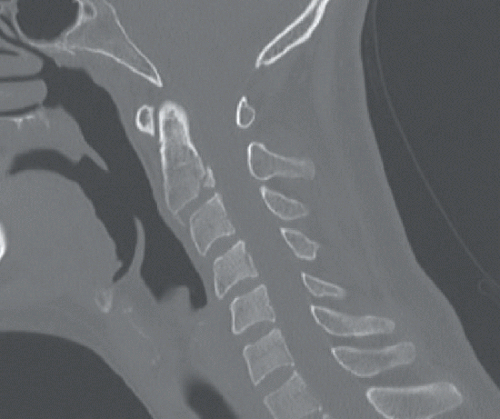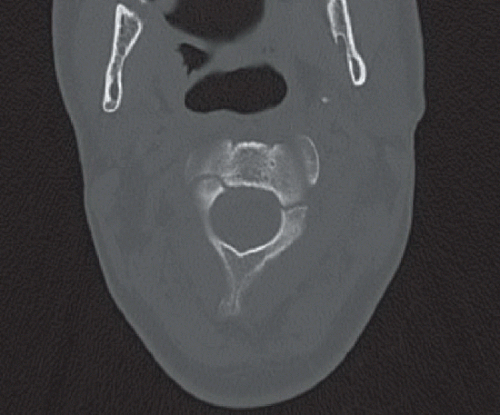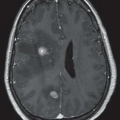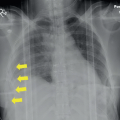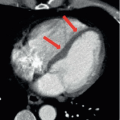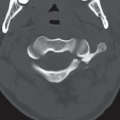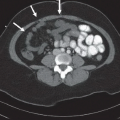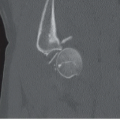Hangman Fracture
Bryan M. Hoag
Daniel B. Nissman
CLINICAL HISTORY
30-year-old female with neck pain following high-speed motor vehicle collision.
FINDINGS
Lateral radiograph (Fig. 27A) of the cervical spine demonstrates a fracture through the pars interarticularis (arrow) of C2 with anterolisthesis of C2 on C3 and mild posterior angulation. Sagittal CT image through the right lateral aspect of C2 (Fig. 27B) and transverse (Fig. 27C) CT image at the level of the C2 vertebral body confirm bilateral pars interarticularis fractures with anterolisthesis of C2 on C3. The overall degree of anterolisthesis is often best seen on the radiographs.
DIFFERENTIAL DIAGNOSIS
Traumatic spondylolisthesis of the axis (TSA), congenital spondylolisthesis of the axis, odontoid fracture.
DIAGNOSIS
TSA (“Hangman Fracture”).
DISCUSSION
TSA is the second most common fracture of the C2 vertebral body, after fractures of the dens, accounting for 22% of axis fractures and 4% of cervical spine fractures overall.1 Although colloquially named “hangman’s fracture” in reference to trauma incurred by judicial hangings, modern day TSA is most commonly a result of motor vehicle collisions, followed in incidence by falls and diving accidents. Although classically considered a hyperextension injury because of its association with the injury incurred in judicial hanging with a submental knot, the more severe forms of TSA are associated with a greater component of flexion, whether as a type of rebound injury or as a purely flexion injury. The posterior element fractures associated with TSA were originally described as bilateral pars interarticularis fractures, but any of the posterior elements may be involved, and fracture location may be different on either side. In both the hyperextension and hyperflexion forms, the rotational stress applied to the C2 body and dens is transmitted to the weaker posterior elements, which have no room to accommodate the rotational stress and subsequently fracture. Continued rotation results in soft tissue injury to the longitudinal ligaments and the C2-3 disk. The spectrum of TSA-type injuries includes both stable and unstable forms; early recognition of the injury and the type is essential to early initiation of appropriate management and prevention of complications. Fortunately, patients who survive the initial trauma rarely suffer neurologic deficits because the diameter of the cervical spinal canal is greatest at C2, and spondylolisthesis generally results in further expansion of the canal.
Stay updated, free articles. Join our Telegram channel

Full access? Get Clinical Tree



